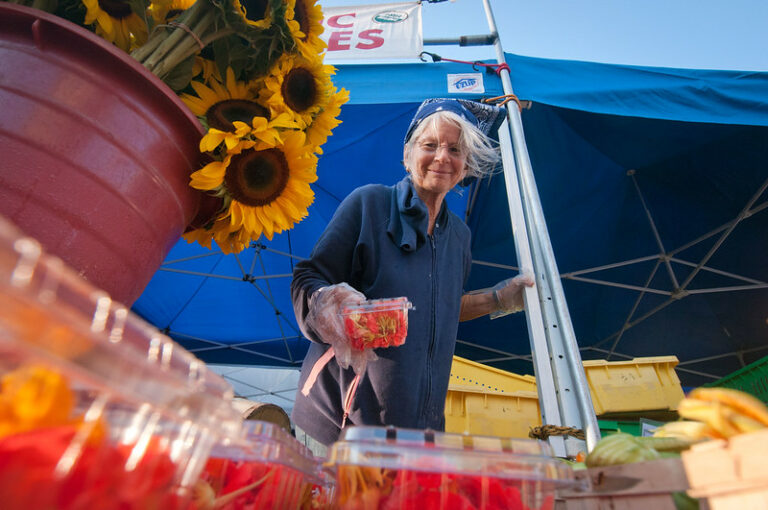
Women farmers quantitatively linked to better community well-being
January 17, 2024
UNIVERSITY PARK, Pa. — Having more women in agriculture is associated with greater community well-being, according to researchers at Penn State and the University of Wisconsin-Madison. Their work is the first to quantitatively assess this link, and their findings suggest that women farmers approach their operations in ways that positively impact their communities.
The study, published online on January 16, 2024, in Applied Economics Perspectives and Policy, revealed that U.S. counties with a higher share of farms owned or operated by women have higher rates of nonfarm entrepreneurship, longer life expectancies and lower poverty rates.
“We know from previous qualitative research that women farmers tend to enter into farming for different reasons than men and often make decisions with the greater good in mind,” said Claudia Schmidt, assistant professor of marketing and local/regional food systems at Penn State and the study’s lead author. “For example, they strive to meet a social need in their community or they prioritize environmental stewardship over profits. Our study is the first to use quantitative research methods to explore whether this concept of ‘civic agriculture’ actually translates to improved community well-being in places higher shares of women farmers.”
Using U.S. county-level data from the most recent U.S. Census and the Census of Agriculture, the researchers conducted a series of analyses to model the independent effect of women farmers on three local economic variables: the poverty rate, average life expectancy and the rate of new business formation. The researchers chose these measures to approximate a community’s quality of life. For example, the rate of new business formation relates to the entrepreneurial energy in a community, which is a good indicator of economic health, said co-author Steve Deller, Vilas Distinguished Achievement Professor and Community Development Extension Specialist at the University of Wisconsin-Madison, who constructed the statistical models.
“Communities with more people starting businesses tend to be more dynamic and resilient to shocks, thus enhancing community well-being,” Deller said. “Similarly, a county with less poverty, and where people tend to have longer lifespans, is likely to be a better place to live than a county with higher poverty rates and shorter life spans.”
They also controlled for the possibility that their findings could be attributed to other community factors, such as the racial composition, the number of single-parent households and the number of college graduates.
The researchers found that the positive association with women farmers spilled over into neighboring counties, meaning that more women farmers in one county was associated with greater community well-being in neighboring counties, too.
“The fact that these spillovers exist suggests having a critical mass of female farmers within a larger region, and not just within a county, has an even greater impact on regional wellbeing,” said co-author Stephan Goetz, professor of agricultural economics and regional economics at Penn State and director of the Northeast Regional Center for Rural Development.
Although the findings do not establish causality, they warrant a closer look by policy makers concerned with rural poverty and well-being, according to Goetz.
“Anything that can help reduce rural poverty is worth looking at more closely,” Goetz said. “Even though women farmers tend to be less profit-driven and operate smaller farms than their male counterparts, our findings suggest that having more of them is good for a community.”
The number of farms operated by women has increased over the past 20 years, according to Schmidt.
“Along with more women participating in agriculture than we’ve seen historically, we’re also beginning to see more research investigating their role and impact in the United States,” Schmidt said, noting that the trend is timely, especially given that this year’s Nobel Prize in economics was awarded for research on the previously unrecognized positive role of women in the general economy. “I’m hoping our study will encourage more research in this area, because there are so many more questions to explore and perspectives to draw from — such as those from women of color or farmers who identify as a gender other than male or female. We need to understand these dynamics to develop sound rural policy strategies and to support greater participation in agriculture.”
The United States Department of Agriculture, National Institute of Food and Agriculture (NIFA), the USDA NIFA and Multistate/Regional Research and Extension Appropriations, and the U.S. Department of Commerce supported this research in part.
